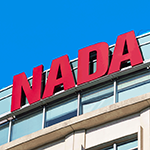A Good Relationship Is a Two-Way Street
BY MARK SCARPELLI, AUGUST 2017
I'm proud to be an auto dealer. I'm proud to work with the manufacturers that make the great products we sell every day. And I'm proud of the gains we have made-for over 100 years-based on a symbiotic relationship between retailers and OEMs. And if we intend to keep serving our customers efficiently, safely and cost-effectively, we need to preserve that symbiosis, with dealers and OEMs working together, not against one another.
I am holding strong to the stance that if factory efforts such as stair-step incentive programs run afoul of everything we and our customers care about, including fairness and transparency, then we are obliged to tell our factory partners that the stairs are merely steps leading directly to the basement. The ongoing proliferation of market strategies such as indiscriminate price coupons are complicated and deflating for both dealers and consumers. The same can be said of factory efforts within a dealer's fixed operations, namely our service centers, where we're hampered by oil/tire programs, service programs and much more. I am seeing that more often the ends do not justify the means.
I have spoken to hundreds of my fellow dealers who agree that the No. 1 disadvantage is that many of these factory programs are not available to everyone. Dealerships of different sizes—or those in more rural and less populated locations—are on vastly different footing compared to those that are able to utilize these programs. Dealers are, at their most basic, entrepreneurs and change-makers. We are tough and resilient even in the harshest conditions. We are not asking for a handout; we simply expect equal footing.
I've said this before, but it bears repeating. To remain the booming economic engine our industry has been for this country, we need to remain profitable. To remain profitable, we need to be on the same page. Dealers and manufacturers should have the same goal: to sell our inventory in large volume and at competitive prices while maintaining the integrity of the brand and creating a great customer experience. There is a problem when dealers are carrying the latest and greatest models in their inventory, but still lack the opportunity to be profitable and satisfy their customers.
There is a problem when the OEM mandates are many, but the realistic objectives are few.
I'd like to remind all stakeholders of our great industry that the next few decades will bring rapid change. In his study, The Dealership of Tomorrow: 2025, Glenn Mercer announced critical findings from his research, including the fact that the current dealership model-the franchise system-will remain dominant. His research also postulates that dealerships will become more alike, with dealers adopting prescribed features of factory stores. Our numbers may also fluctuate over the next few years, with the number of dealerships shrinking slightly to an estimated 16,500 stores by 2025. While slow consolidation of store ownership will continue, private ownership will still dominate.
What does this tell us?
All in all, chances are the "Joe Smith" family-owned and operated, local dealership in Everywhere Township will stand the test of time. Dealers are doing all they can to adapt, pivot and remain flexible through the challenges ahead. We ask that our manufacturers are with us too.
Every good relationship is a two-way street. OEMs and dealers have but one option: repave ours, smooth out the bumps and restore that street to its full glory.
Scarpelli is 2017 NADA chairman and president of Raymond Chevrolet and Raymond Kia in Antioch, Ill., and co-owner of Ray Chevrolet and Ray Chrysler-Jeep-Dodge-Ram in Fox Lake, Ill.
Media Contacts

